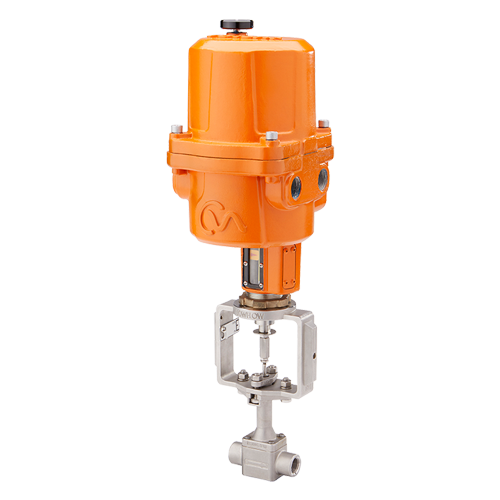Exploring the Functionality of Modern Control Valves in Industrial Applications
Exploring the Functionality of Modern Control Valves in Industrial Applications
Blog Article
Achieve Seamless Combination and Control With Quality Building Automation Controls
In the world of modern building management, the relevance of top quality structure automation controls can not be overstated. Welcoming top quality building automation controls is not simply an issue of ease however a calculated essential for organizations aiming to enhance their facilities' performance and sustainability.

Advancement of Structure Automation Controls
Throughout the previous few years, the advancement of building automation controls has actually dramatically transformed the way buildings are taken care of and run. Developing automation systems primarily focused on standard functions such as managing home heating, air, and ventilation conditioning (HVAC) systems. As innovation progressed, these controls have ended up being extra innovative, allowing for a larger variety of building systems to be incorporated and managed centrally.
The advancement of building automation controls has seen a shift in the direction of even more smart systems that can adapt to changing problems in real-time. This flexibility is important for enhancing power effectiveness and guaranteeing passenger convenience. Additionally, modern building automation controls currently use features such as anticipating maintenance, remote surveillance, and data analytics, making it possible for facility managers to make data-driven decisions to improve building efficiency.

Advantages of High Quality Assimilation
The improvement in building automation controls towards more smart systems has actually emphasized the substantial advantages of quality combination in enhancing building operations and improving general effectiveness. This centralized control additionally provides better visibility and understandings right into structure performance, enabling proactive upkeep and optimization strategies. Generally, the benefits of top quality integration in building automation controls are indisputable, providing raised efficiency, convenience, and operational effectiveness.
Enhanced User Experience and Access
Enhancing individual interaction with building automation controls through instinctive layout and boosted access elevates the general experience for residents and facility managers alike. By concentrating on user experience, developing automation systems can come to be more straightforward and efficient. User-friendly interfaces, clear navigating, and customizable setups equip users to communicate with the controls easily and successfully.
Accessibility attributes play a vital function in guaranteeing that all individuals, including those with disabilities, can use the structure automation controls effortlessly. Incorporating features such as voice commands, responsive buttons, and color-contrasted displays can improve access and make the controls extra inclusive.
Furthermore, boosted individual experience leads to greater individual satisfaction, enhanced productivity, and much better decision-making. Residents can adjust environmental settings according to their choices, while center supervisors can successfully check and take care of structure systems - control valves. Generally, focusing on user experience and ease of access in structure automation controls contributes to a much more smooth and efficient building atmosphere for all stakeholders included
Sustainable Practices Through Automation

In addition, automation can help with the combination of renewable power sources such as solar panels or wind generators right into building operations. Through automation, structures can line up with modern-day sustainability objectives and add to a greener future.
Future Trends in Building Control Equipment
In expectancy of progressing and advancing technologies sustainability methods, the trajectory of structure control systems is positioned to welcome ingenious services and transformative techniques. One next page famous pattern forming the future of structure control systems is the raised combination of Expert system (AI) and maker discovering. These technologies make it possible for structures to adjust in real-time to changing conditions, maximizing power intake and boosting convenience for owners. In addition, the Net of Things (IoT) is reinventing structure control systems by linking sensing units and devices to boost and improve procedures efficiency.
An additional essential fad is the emphasis on cybersecurity measures to secure against potential hazards to building automation systems. As buildings become a lot more interconnected, guaranteeing robust cybersecurity methods will be vital to safeguard sensitive data and protect against unauthorized access.
In addition, the change in the direction of cloud-based systems is obtaining momentum, allowing for streamlined control and remote access to building systems. This promotes much easier monitoring, maintenance, and updates, improving the general efficiency and adaptability of structure control systems. As innovation remains to advance, these fads are anticipated to form the future landscape of structure automation controls, driving advancement and sustainability in the constructed environment.
Verdict
Future patterns in structure control systems are most likely to focus on further boosting automation capabilities for enhanced energy performance and overall efficiency. It is necessary for building proprietors and drivers to focus on the fostering of quality structure automation manages to optimize structure operations and achieve lasting sustainability objectives.
In the world of contemporary building monitoring, the importance of quality building automation controls can not be overemphasized. Generally, the advancement of building automation controls proceeds to drive advancement in the building monitoring sector, using new possibilities for creating smarter and a lot more sustainable structures.
The innovation in structure automation manages towards more intelligent systems has highlighted the significant benefits of top quality combination in optimizing building operations and improving total effectiveness. On the whole, focusing on customer experience and access in structure automation regulates contributes to an extra go to these guys smooth and productive structure environment link for all stakeholders entailed.
It is crucial for structure proprietors and drivers to prioritize the adoption of top quality building automation manages to optimize building procedures and accomplish long-term sustainability objectives. - control valves
Report this page